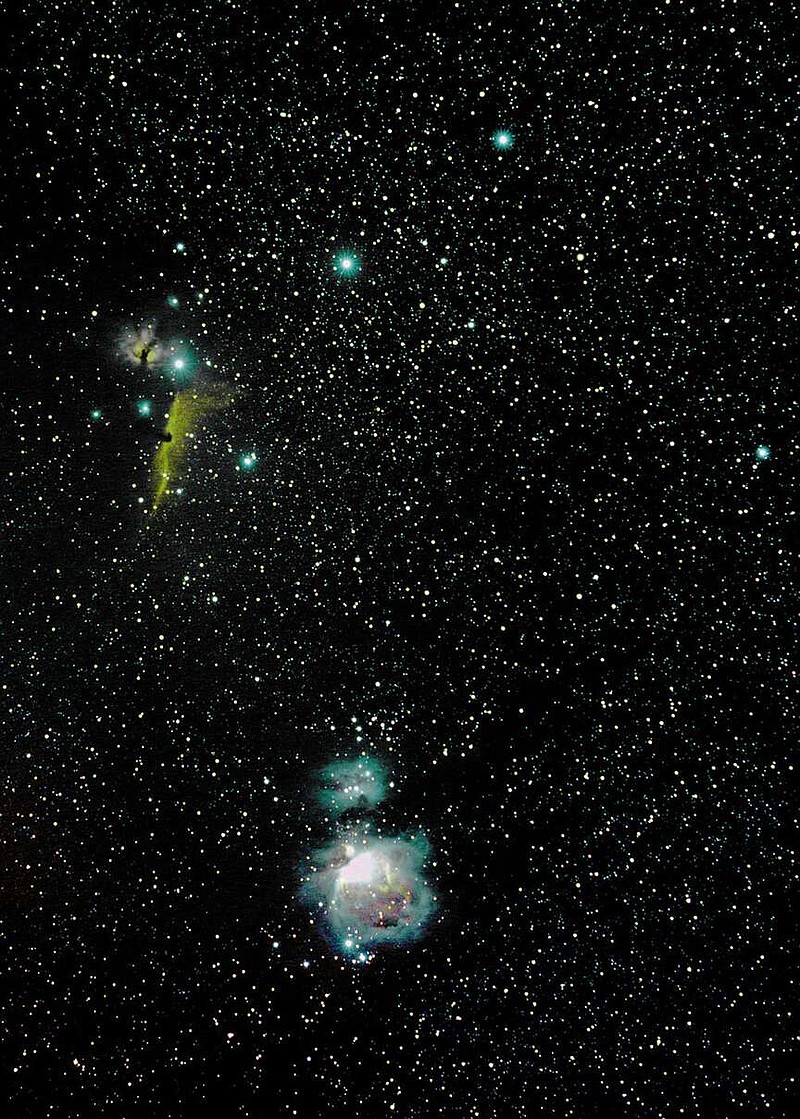Orion the Hunter -- Wow!
Orion the Hunter, my favorite constellation, is well up and easily seen in January. Look south about 10 p.m. or a bit earlier, and he will be spread across the sky south of overhead.
You can easily distinguish Orion's left shoulder as the tawny red star that is quite bright. This star is a huge red giant star of special interest to professional astronomers because someday, most likely not in our lifetimes, it will explode as a supernova. It is close enough to Earth that when it does explode, it will be visible in the daytime.
You can easily see Orion's right foot because it is a very bright blue giant star, Rigel. Rigel is a multiple star, only resolved as such with a telescope. Rigel is relatively young and very hot -- so hot it is bluish-white in binoculars.
Orion wears a belt extending across the middle of his body. [You need to use your imagination here!] It is made up of three bright, hot stars that will also have a bluish cast. They all have Arabic names and, starting from left to right, they are Alnitak, Alnilam, and Mintaka. They are worth looking up on your search engine, where you will learn their characteristics and star types.
Once you have located Orion's left shoulder, his right foot, and his belt, the remainder of this ancient hunter can be seen with relative ease. This constellation has been known since ancient times by many cultures, and all cultures have seen the arrangement of stars as some sort of man figure.
As an amateur astrophotographer, Orion holds the greatest interest to me because it is loaded with clouds of hydrogen gas, as well as other gases. These gases form nebulae or clouds on an enormous scale, light years across. These gases glow brightly in amateur photographs. The gases glow as brightly as they do because the gases are excited by the ultraviolet light pouring off the many hot stars in the region. The physical process is similar to the way fluorescent lights work in your home.
I have included a wide-field shot of Orion I made last year. The picture includes the three belt stars in Orion as well as the Horsehead nebula, near Alnitak, and, just below the center in the photograph, the enormous nebula M42.
M42 is one of the richest star-forming regions we know of in our Milky Way galaxy. You can see it with good binoculars. It is Orion's 'sword.' A telescope of 4 inches or more will start to reveal the wispy contours of this great cloud of gas, and a 10- or 12-inch 'scope' will show you marvelous interior details. Many relatively new stars are within the gaseous cloud, exciting the Hydrogen atoms and their electrons, causing them to literally jump up and down in their tiny orbits, giving off light. Look up M42 on the internet and you will see many amateur and professional images of this great nebula and the intricacies traced out by these shining gases.
Jupiter will be positioned almost directly overhead now and, with those same binoculars, you can see one or two of its moons. Again, a telescope will let you see much more detail on the planet itself, as well as all of the four moons Galileo saw around 1610.
Next month, I plan to give you more insights about Orion, and I will include an image I made about four years ago that shows some of the gaseous intricacies as above.
See you then, and -- Happy New Year to all!
David Cater is a former faculty member of JBU. Email him at [email protected]. Opinions expressed are those of the author.

